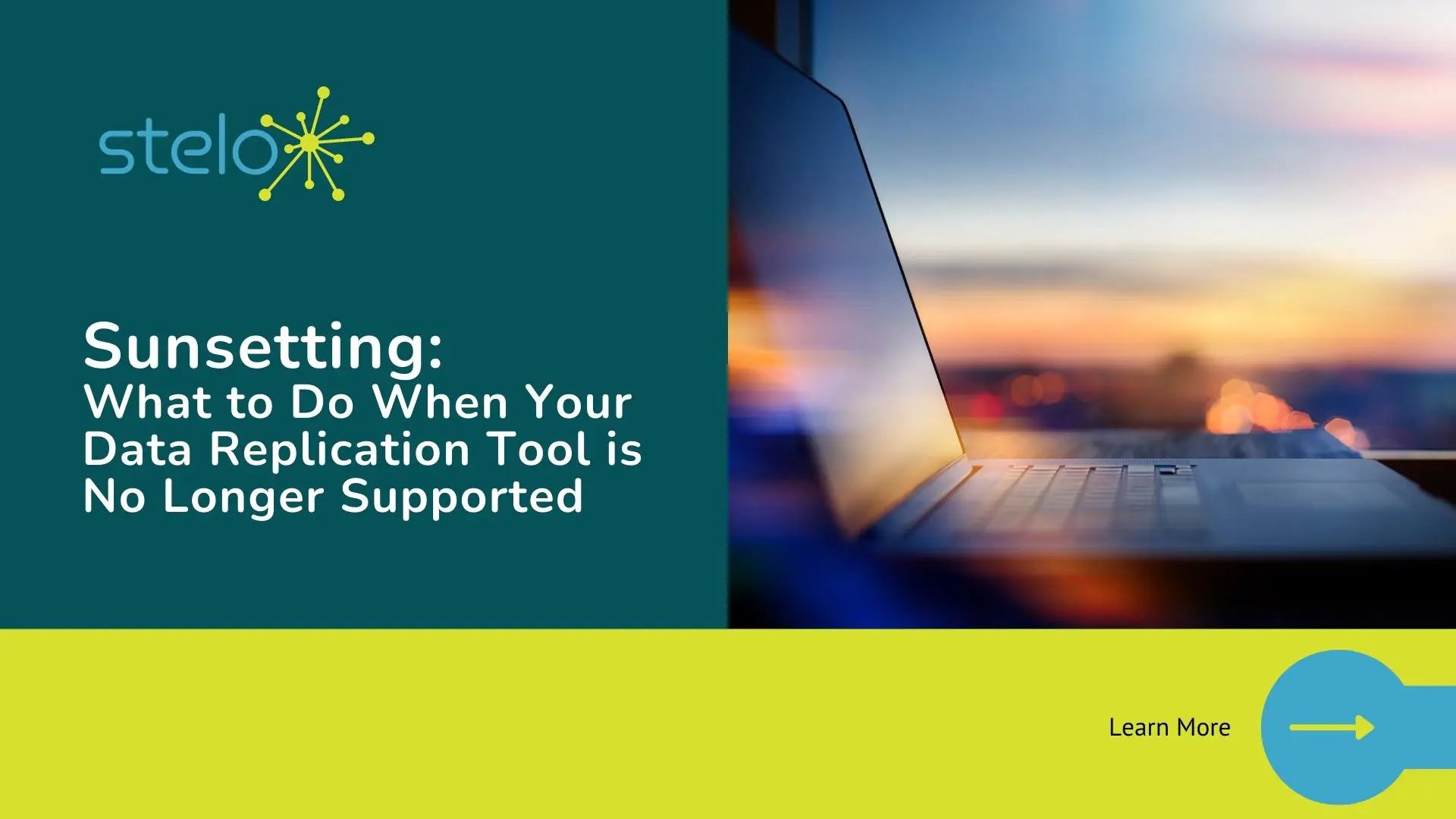Sunsetting: What to Do When Your Data Replication Tool is No Longer Supported
Selecting the right data replication tool for your business is no small investment: it requires a deep understanding of your data requirements, time to analyze your options, and buy-in from multiple stakeholders. So when your trusted data replication tool is no longer supported, it might be tempting to continue using it, especially if it's ingrained in your workflow. However, there are inherent security and compatibility risks to this approach, not to mention degradation of performance over time and lack of support when issues inevitably arise. And—in highly-regulated industries—there is no guarantee that your systems will comply with ever-evolving data protection regulations.

While the situation of what to do when your data replication tool is retired might seem daunting, there are steps you can take to ensure an easy switch to a new tool. In this blog post, we’ll guide you through 8 practical steps you can take to ensure a smooth transition to a new data replication tool:
- Assess the impact to your data ecosystem
- Research alternative solutions
- Strategize integration with other workflow tools
- Develop a data cutover plan
- Backup and preserve your data
- Test and validate your new solution
- Remove your old tool
- Continuously evaluate
1. Assess the Impact
Start by assessing how transitioning to a new data replication tool will affect your operations. Identify integration points with other tools and future data integration initiatives. This evaluation will guide your next steps.
2. Research Alternatives
Take advantage of this situation to explore better solutions. Look for data replication partners that not only support the functionality you're losing but also offer additional features that could boost your efficiency and productivity.
Some important questions to guide your evaluation:
- Does this solution support my current and future data store requirements?
- What is the Total Cost of Ownership (TCO)?
- What is the impact on my IT resources?
- How long does the tool take to deploy?
- Can data replication be deployed between on-prem and cloud stores?
3. Create an Integration Strategy
Ensure your new data replication tool can seamlessly integrate with all of your data stores. This will help maintain your workflow and prevent data loss. If you have Oracle source data, for example, an additional consideration should be how the new replication tool accesses source data for change data capture (CDC). It is important to find a solution that is not reverse engineered because it may be missing vital and proprietary functionality that leads to a less than robust solution.
4. Develop a Data Cutover Plan
Once a new replication tool has been selected the next step is to create a seamless cutover plan to avoid any production disruption. Develop a comprehensive plan that outlines how you'll move your existing data from the decommissioned data replication tool to the new one. Keep stakeholders in the loop about the transition. Inform business teams and end users about the change, its benefits, and the timeline. Open communication with the deployment team reduces confusion, ensuring data integrity and minimal disruption during this process.
5. Backup and Preserve
Don't forget to create backups of data from all of your sources before using the new tool. This ensures you have a safety net in case of any unforeseen issues during the transition.
6. Test and Validate
Before fully committing to your new data replication tool, conduct thorough testing and validation. Ensure that it meets your needs, integrates well, and performs reliably.
7. Dispose of the Old
Once the transition is complete, securely dispose of any remnants of the unsupported data replication tool. This prevents accidental usage, ensures a clean break, and protects data integrity.
8. Continuously Evaluate
After the transition, periodically evaluate your data replication tool’s performance, support, and alignment with your evolving needs. Look for a data replication tool that can scale to ensure that as your business grows, your tool grows with it. Regular reviews will help you stay proactive and adaptable.
Explore Your Data Replication Options
Remember, change is an opportunity for growth. While the discontinuation of a trusted data replication tool might be challenging, it can lead to discovering more efficient and innovative solutions. By following these steps, you'll not only weather the transition but also elevate your organization's digital capabilities.
Are you faced with the decision to transition to a new data replication tool? Contact us today to schedule a product demo and evaluate whether Stelo is right for your business.
- Data Replication (22)
- Data Ingestion (11)
- Real Time Data Replication (10)
- DB2 Data Replication (4)
- Oracle Data Replication (4)
- iSeries Data Replication (4)
- v6.1 (4)
- JDE Oracle Data Replication (2)
- Solution: Delta Lakes (2)
- Technology: Databricks (2)
- Technology: Google BigQuery (2)
- Technology: IBM DB2 (2)
- News (1)
- Solution: Data Streaming (1)
- StarSQL (1)
- Technology: Aurora (1)
- Technology: Azure (1)
- Technology: Informix (1)
- Technology: Kafka (1)
- Technology: MySQL (1)
- Technology: OCI (1)
- Technology: Oracle (1)
- Technology: SQL Server (1)
- Technology: Synapse (1)
- October 2025 (1)
- September 2025 (1)
- May 2025 (1)
- April 2025 (1)
- January 2025 (1)
- October 2024 (1)
- November 2023 (1)
- August 2023 (1)
- April 2023 (3)
- February 2023 (1)
- November 2022 (2)
- October 2022 (1)
- August 2022 (1)
- May 2022 (2)
- December 2020 (20)
- October 2018 (2)
- August 2018 (3)
- July 2018 (1)
- June 2017 (2)
- March 2017 (2)
- November 2016 (1)
- October 2016 (1)
- February 2016 (1)
- July 2015 (1)
- March 2015 (2)
- February 2015 (2)
